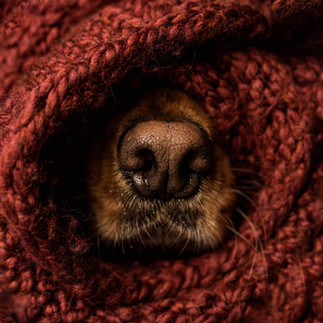Tips and tricks for better pet portraits
- Jessica Thibault
- Feb 3, 2023
- 3 min read
Updated: Jun 22, 2023

We all love our pets but sometimes getting a good picture of them can be challenging. Here are a few tricks to help you capture a stunning pet portrait.
Focus on the eye - When looking at a portrait, the first thing we usually notice is the eye of the subject. It is a powerful tool to convey emotion and draw the viewer to our photo. So, when taking a photo of your pet, get down to their level and be sure that the eyes are in focus (not the nose!) by setting your focus point directly on one of the eyes.
Use soft light - Try to look for soft light to avoid harsh shadows on their face. To do that, look for clouds or shade. You can also try to take your pictures when the light is softer because of the angle of the sun, so, right before or during sunrise and right after or during sunset. Finally, you can always get creative and use a semi-transparent drape or sheet to diffuse the light hitting your pet.
Tire them out - It can be really hard to get a nice portrait of your pet when they are feeling overzealous. So before you pull out the camera, make them run or mentally stimulate them to tire them out. If you are taking them to a new environment, give them time to get acquainted with their new space. A tired dog will listen better and thus help you capture more photos that are in focus.
Avoid distracting backgrounds - Unless the background helps you tell a story, like: hiking with my dog in the alps (in this case you definitely want to include the alps in your background), try to avoid any busy background that will distract the viewer from looking at your pet. Take a good look at what is in the frame with your pet. Is there a tree branch sticking out of their head? Is there lots of colour and things popping out behind them that are not important to your photo?
Catch them in their natural habitat - Is there something that your pet does that is cute and kind of unique? Maybe they like to lay like a frog, cross their front legs when they sit or dig their face in the snow. If so, try to catch them when they are relaxed and just doing their thing. I also love using these quirks in the environment of my choosing. For example, my female loves to lay cross legged with her face down on her legs, therefore, I will sometimes place her where I want to take my picture (nice light, no distractions) and simply wait for her to relax and get into her comfy position before I take her picture.
Watch your shutter speed - If you want to get some action shots, or you have a pet that can’t stay still very long, consider increasing your shutter speed. Even cell phone camera’s will let you increase the speed if you go to your pro settings. I recommend starting at 1/200ths of second. This will eliminate some movement blur from your photo. Have fun and play around with that setting! Don’t be afraid to even add in a little blur (slow it down) for a few photos to tell a story.
Reward! Reward! Reward! And take breaks! Don’t forget to use those treats and toys your pet loves to get and maintain their attention. Let them play in between photos and take breaks if you feel yourself getting frustrated.
Get creative - Don’t be afraid to get creative with your photos. Add in some props that help showcase your dog's personality (maybe a little bow-tie? His favorite toy?). Frame your shot in different ways (although we try to avoid cutting the tail or a foot out of the photo, don’t hesitate to purposely frame things out of your photo to show different details of your pet). Have fun with it!
Look to others for inspiration - There is so much talent out there. Take some time to look at pet photographers and see what they do. Be curious, what is it that you like about their work? By figuring out what you like to look at, you will get better at taking those kinds of photos. Sometimes these photographers share good tips and tricks too.
Practice! Just get out there and take some photos! The more you do it, the more you’ll get the photos you want. Plus, your pet will get used to the process.































